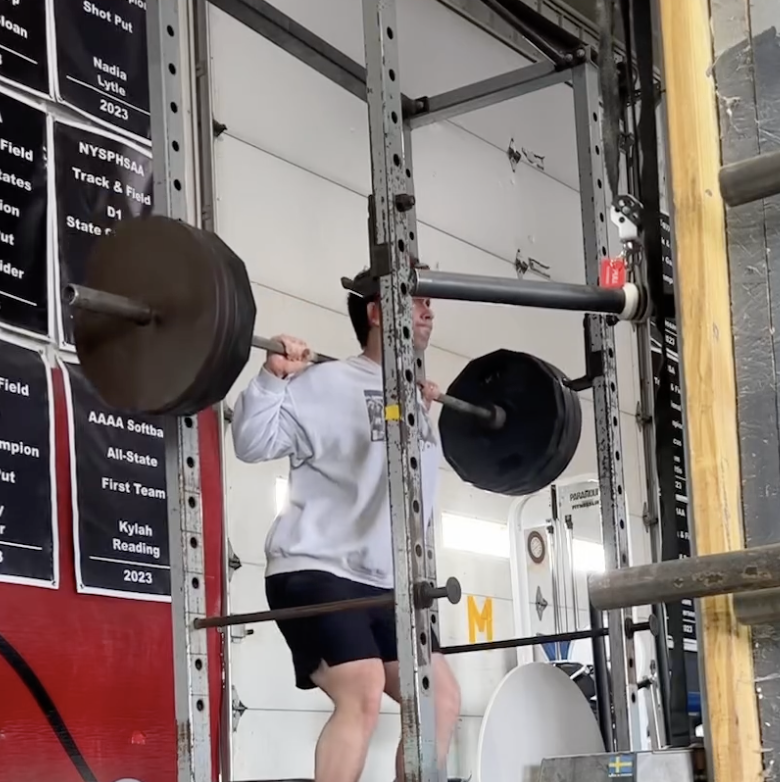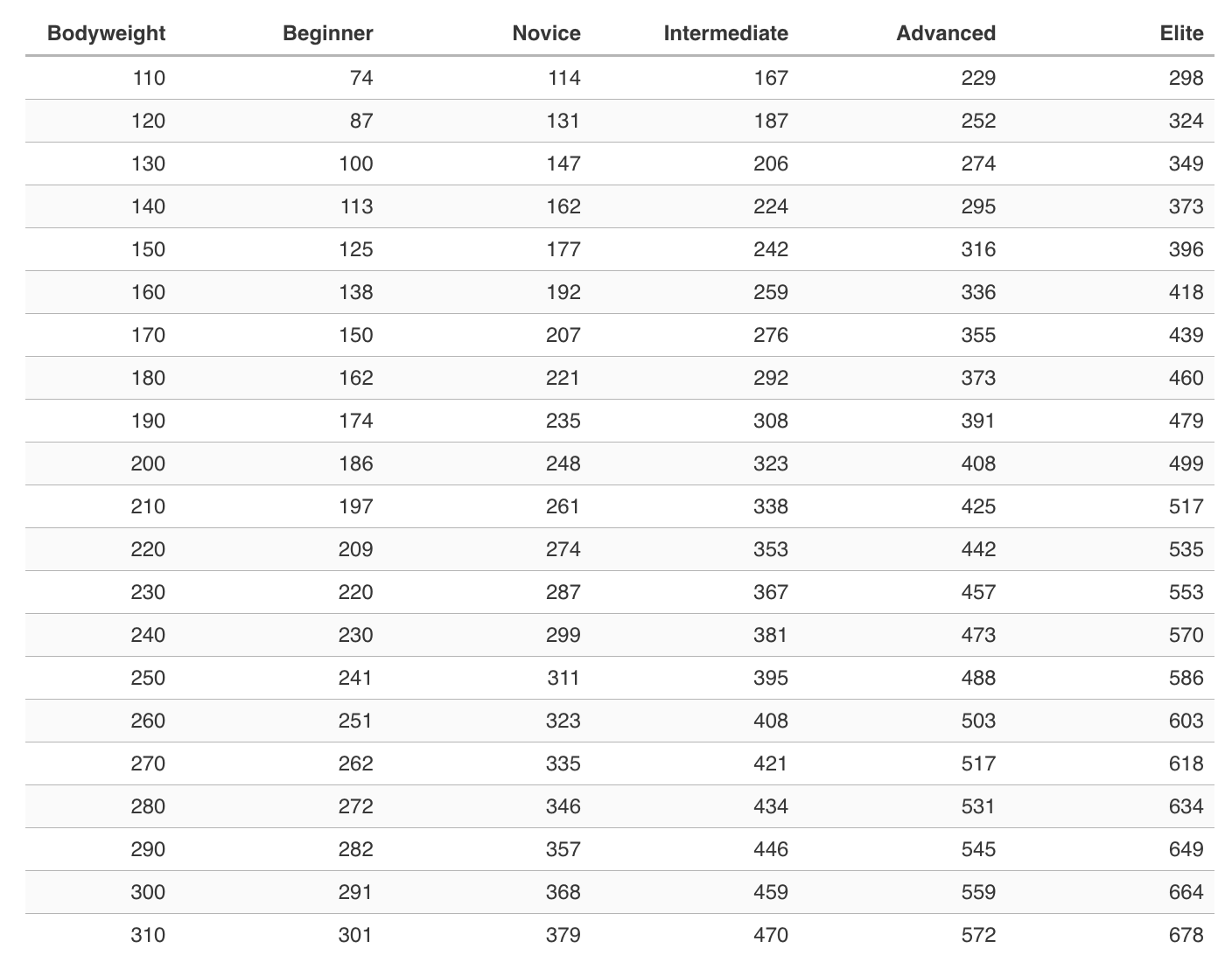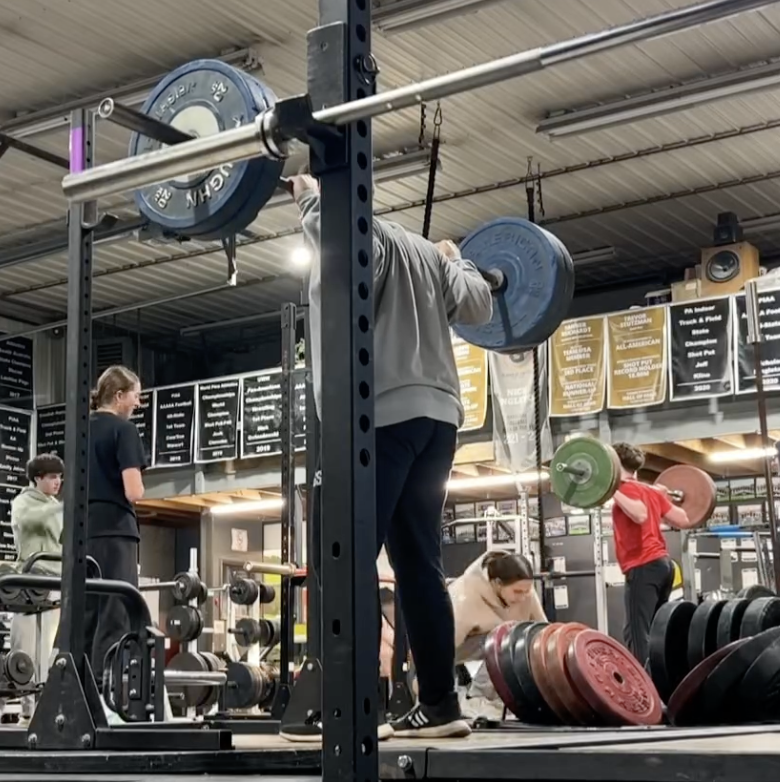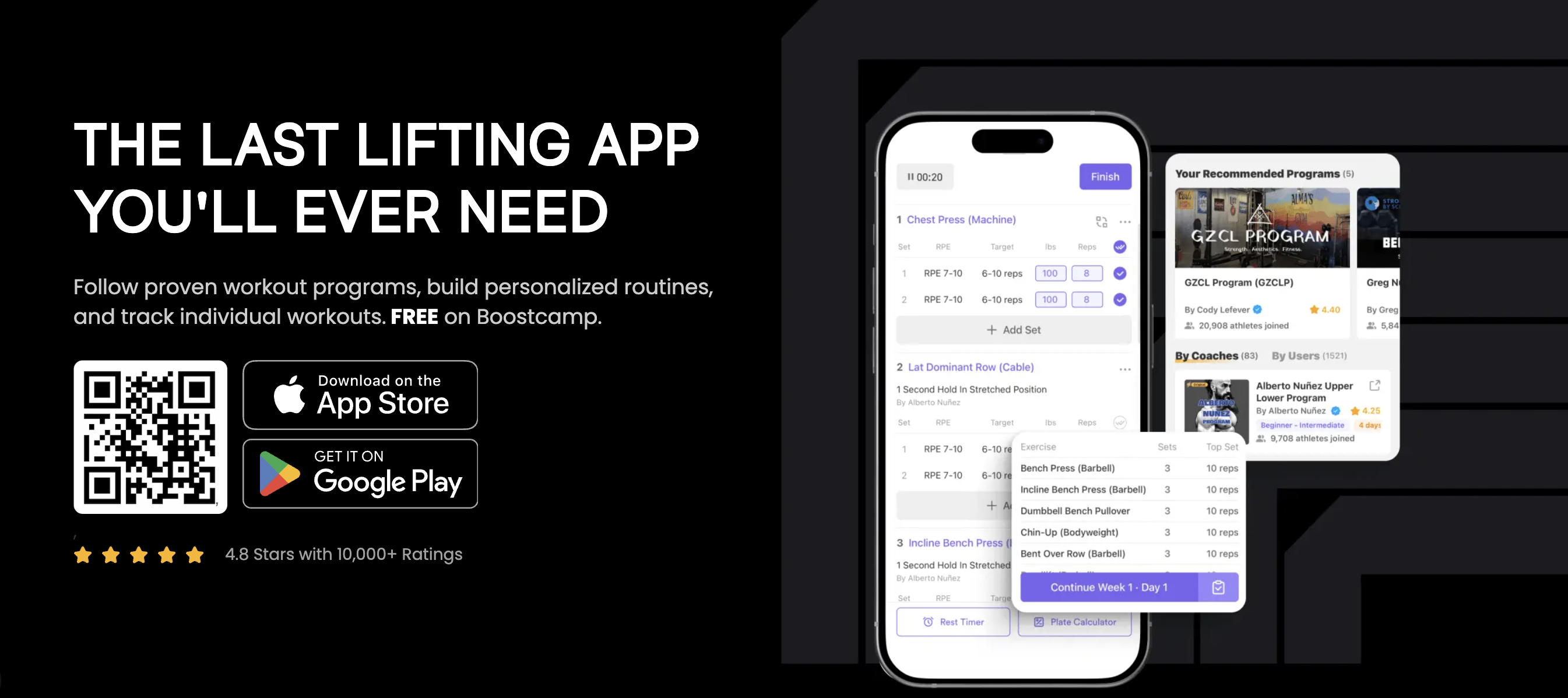The Average Squat by Body Weight
Written by The Boostcamp Editors
How much are you squatting? Is it enough?
The barbell squat is one of the most popular compound movements that is used in almost every training program in order to build up the legs. It does not matter if you are training for bodybuilding or powerlifting or even something such as Olympic Weightlifting, the squat finds a way into the programs. That being said, when it comes to your body weight, are you squatting the right amount of weight? A 500 pound squat is typically more impressive when someone is lighter, rather than weighing close to 500 pounds themselves. That being said, what is the average squat by body weight?
Our team at Boostcamp is going to take a deep dive into the squat, the benefits of adding it to your weight training program, and what the average squat by body weight is.
Average Squat by Body Weight

Finding the average squat by body weight is not as cut and dry as you may think, there are actually many different factors that you have to take into consideration when trying to determine the proper numbers. One of the biggest things to consider is your skill level and lifting experience. For example, if you are just starting out in the gym, you more than likely will not be squatting hundreds and hundreds of pounds. On the flip side, if you are at a higher skill level and have been working towards increasing your squat through proper training routines, utilizing accessory movements to strengthen weak points, incorporating progressive overload, and really training hard with the utmost intensity, then maybe a heavier squat is feasible pretty early on.
Genetics also play a large role in finding the average squat by body weight. Do you come from a family of lifters? Do you naturally have stronger ligaments and joints? These things matter.
When finding the average squat by body weight, you also have to take into consideration the training style that you abide by. For example, if your training is more bodybuilding focused where you are aiming for hypertrophy, you might be doing higher volume and intensity training, but not necessarily testing out those one rep maxes or even hitting lower reps. That being said, you may not have a “strong” squat for your bodyweight. On the flip side, if you are training for powerlifting and other strength sports where you are doing heavy work and trying to work up and peak with a crazy one rep max, then you may have what is considered a “strong” squat for your body weight.
To give you an idea of what your squat should look like by body weight, check out this graphic:
 Image courtesy of Strength Level
Image courtesy of Strength Level
How to Perform the Squat
One of the biggest things to consider when finding the average squat by body weight is if you are doing it correctly. Let’s take a look at how to execute a great barbell squat, so you know how to do it and are not risking hurting yourself or sacrificing your gains and progression.
Place the barbell on your shoulders in a comfortable position
Stand straight, with feet hip-width apart
Brace your core muscles (lifting belts are acceptable, but do not depend on them)
Lower down as if you are sitting in a chair that is at 90 degrees or lower
Stand back up and repeat
It is such a simple movement, yet it is so easy to mess it up and injure yourself. If you can master your form, the benefits are fantastic, which leads to the next point.
Pros and Cons of Squats

Now, just as with anything, the barbell squat has its pros and cons. That being said, looking at the pros and cons of the barbell squat is crucial.
Pros of the Squat
As stated above, when performed correctly, the squat brings a load of benefits that can even help you in your other lifts, but also in your everyday life.
Here are some benefits of the barbell squat:
Stronger glutes: The squat is a great glute builder, which not only aids to the aesthetic aspect of your physique, but also can transfer to other lifts such as the deadlift, on the lockout part of the movement in particular.
Functionality: The squat is a functional movement, as it helps with the strength of everyday movements such as standing up and going up a flight of stairs.
Increased bone strength: Yes, squats can even help with your bones. Weight bearing exercises are known to help with your bones, and squats in particular help make hip and leg bones, as well as your joints more resilient via improved bone mineral density.
Weight loss: Even though you will be building muscle with the squat, they will burn more calories than a lot of other lifts as they recruit more muscle fibers than many other movements.
Overall muscle growth: When you want to pack on the muscle mass, a squat is a great exercise to do so, and not only for your legs. The squat helps the body generate more human growth hormone as well as testosterone, which are both necessary for building muscle.
Cons of the Squat
While the squat brings a great load of benefits to the table for your overall physique and strength, there are also cons associated with the movement. Here are some of the cons of the barbell squat:
Risk of spinal injury: A lot of pressure is put on the midsection, the spinal chord in particular, when squatting. That being said, pieces of gym equipment like a weightlifting belt can be good to keep in your gym bag for when you are really getting up there in weight.
Risk of knee injury: Squatting requires a lot of knee strength, and with improper form or too much overload, you risk blowing out your knees, so something like knee sleeves is great to have on hand.
Can hurt posture: If you are overloading your spinal cord and injuring yourself, there is the chance that your posture is never going to be the same.
How to Improve the Squat by Body Weight
Let’s take a look at what you need to do in order to improve your squat by body weight.
Follow a Program
We could name a million things for you to improve your barbell squat by body weight, but one of the most surefire ways of improving your squat by bodyweight is by following a program. A good lifting program will help you incorporate things like progressive overload as well as deload weeks, help you to track your progress, and overall hold you accountable for what you do in the gym.
When looking for a program to increase your squat by bodyweight, you can get a cookie cutter program that a regular trainer will charge you a crazy amount for. But keep in mind that there are plenty of good programs available on Boostcamp to help you make progress. A good program will keep you on track, making sure that you are making the most gains and maximizing your time in the gym. If you are looking to stay on track and continue with linear progression with your barbell squat, then finding a good workout program is the key.
Boostcamp is home to over 50 FREE workout programs that are written by some renowned coaches and consist of strength, hypertrophy, or functional fitness, or both, from the push pull legs program all the way to upper lower, there are so many programs to choose from that can help fit your needs. However, with Boostcamp, you don’t have to just follow a pre-written program (although each program is written by a professional), you also can create your own program as well, and track your progress to make sure you are on the right track. That being said, when you are looking to incorporate some serious training to further your progress on your squat by bodyweight, then check out Boostcamp.
Average Squat by Body Weight Wrap Up
Overall, the barbell squat is a great movement to really help you increase your gains. When it comes to the average squat by body weight, are you where you should be? Are you below average? Or are you above average?
Let us know! Also, be sure to follow Boostcamp on Instagram and subscribe on YouTube!


